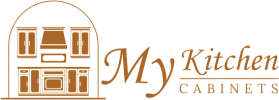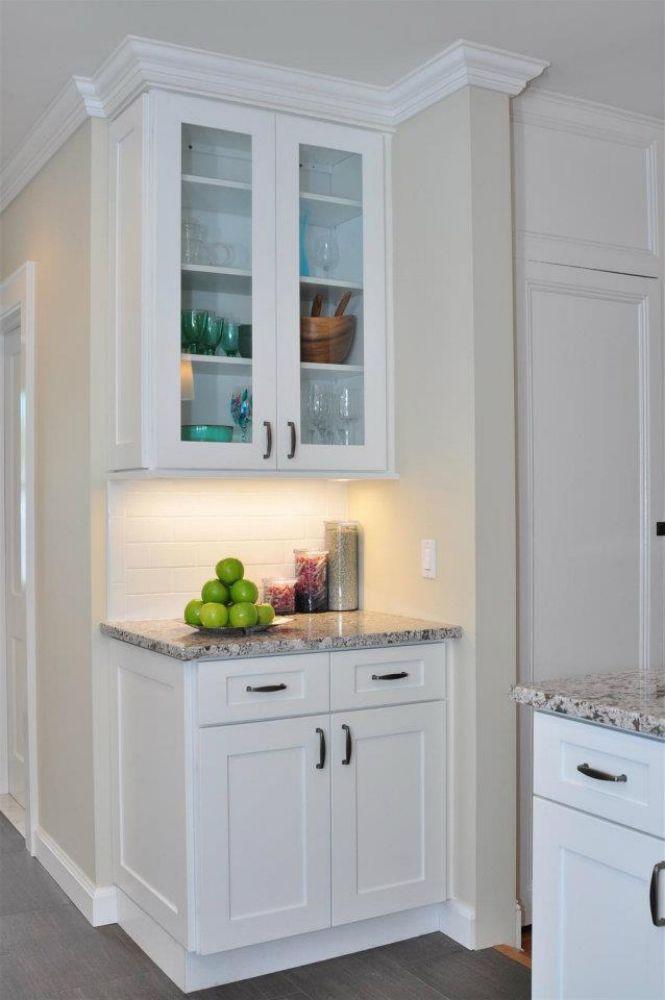White kitchen cabinets are timeless and elegant, offering a fresh and clean look to any home. However, one of the biggest concerns homeowners face with white cabinetry is the risk of yellowing over time. This discoloration can be caused by a variety of factors, including exposure to sunlight, cooking habits, moisture, and even the type of finish used on the cabinets. Understanding how to protect your investment will not only preserve the beauty of your cabinets but also extend their lifespan.
In this article, we will explore practical methods to maintain the pristine appearance of white kitchen cabinets, explain common causes of yellowing, and share professional tips to ensure your kitchen continues to look stylish and inviting for years to come.
Causes of Yellowing in White Cabinets
White cabinets are vulnerable to discoloration for several reasons:
-
Sunlight Exposure – Prolonged UV light exposure can break down paint pigments, leading to a yellowish tint.
-
Heat and Steam – Cooking activities release grease, steam, and smoke that can settle on cabinet surfaces.
-
Moisture and Humidity – Kitchens naturally have high moisture levels, which can affect cabinet finishes.
-
Cleaning Chemicals – Harsh cleaners or abrasive sponges may damage protective coatings.
-
Aging Finishes – Over time, oil-based paints and varnishes tend to yellow.
By identifying the root causes, you can take preventive steps and maintain your cabinetry’s bright and clean appearance.
Regular Cleaning and Maintenance
A consistent cleaning routine is essential in keeping white cabinets fresh and bright. Avoid waiting until stains build up; instead, adopt a preventive approach.
-
Use Gentle Cleaners: Mild soap and water are usually sufficient for daily cleaning.
-
Avoid Harsh Chemicals: Bleach and ammonia-based products can cause finishes to break down.
-
Microfiber Cloths: These are excellent for removing grease and dust without scratching surfaces.
-
Routine Wiping: Especially near cooking areas, wipe down doors weekly to prevent grease accumulation.
Simple habits like these can make a noticeable difference in preventing yellowing.
Protecting Cabinets from Sunlight
Since UV rays are a leading cause of discoloration, consider strategies to minimize direct sunlight.
-
Window Treatments: Install blinds, curtains, or UV-protective window films.
-
Strategic Layout: If renovating, avoid placing cabinets in direct sunlight zones.
-
UV-Protective Finishes: Modern cabinet finishes often include UV inhibitors for added protection.
Managing sunlight exposure not only protects the cabinets but also helps maintain a cooler, more comfortable kitchen environment.
Reducing Heat and Moisture
Heat and steam are constant threats to white cabinetry. Protecting your cabinets requires proper kitchen design and ventilation.
-
Range Hoods: Always use a range hood when cooking to filter out steam, smoke, and grease.
-
Ventilation: Good airflow keeps humidity levels in check.
-
Protective Mats: Inside cabinets near sinks, use mats to prevent moisture damage.
-
Pet Friendly Tip: If you have pets, ensure their water and food bowls are kept on mats to avoid splashes damaging the lower cabinets.
Reducing environmental stressors will extend the life and brightness of your cabinets.
Choosing the Right Paint or Finish
Not all finishes age the same. If you are considering new white cabinets or repainting existing ones, your choice of finish plays a significant role in long-term maintenance.
-
Water-Based Paints: These resist yellowing more effectively than oil-based paints.
-
High-Quality Sealants: A clear protective topcoat adds resistance against stains and UV light.
-
Semi-Gloss or Gloss Finishes: These are easier to clean compared to matte finishes.
A durable finish ensures that cabinets remain vibrant even after years of use.
Professional Refinishing and Touch-Ups
Even with careful maintenance, minor wear is inevitable. Instead of allowing yellowing to worsen, consider refinishing options.
-
Cabinet Painting Services: Professionals can recoat cabinets with updated, durable finishes.
-
Spot Treatments: If only small areas show yellowing, targeted refinishing can restore color.
-
Routine Maintenance Checks: Scheduling periodic inspections can help identify early signs of discoloration.
Regular touch-ups help avoid costly replacements and keep the kitchen looking polished.
Why Choose Us?
At My Kitchen Cabinets, we understand the importance of maintaining the beauty and quality of your kitchen. Our cabinets are built with advanced finishes that resist discoloration, stains, and wear. We prioritize craftsmanship, functionality, and aesthetics, ensuring that your home reflects both style and durability.
We also recognize the need for practical solutions in everyday living. That’s why we design cabinets that are easy to clean, pet friendly, and long-lasting. By choosing us, you’re investing in cabinetry that retains its beauty and provides peace of mind for years to come.
Conclusion
Protecting white kitchen cabinets from yellowing is a combination of preventive care, mindful usage, and smart material choices. By understanding the causes of discoloration, maintaining a consistent cleaning routine, reducing environmental stress, and choosing quality finishes, you can keep your cabinets looking fresh and timeless. With the right strategies, your white cabinets will continue to brighten your home and remain a source of pride in your kitchen design.
Frequently Asked Questions
Q: How do I protect white kitchen cabinets from yellowing?
A: Regular cleaning, minimizing sunlight exposure, using proper ventilation, and applying high-quality finishes are the best ways to prevent yellowing.
Q: What is the biggest cause of yellowing in cabinets?
A: Sunlight and heat are the most common causes, as UV rays and cooking grease gradually discolor cabinet surfaces.
Q: Can I repaint yellowed cabinets to restore their original color?
A: Yes, repainting with water-based paints and applying protective sealants can refresh the look of cabinets and help prevent future yellowing.
Q: How often should I clean white cabinets?
A: Wipe them weekly near high-use areas like stoves and sinks, and deep clean monthly to remove hidden grease and stains.
Q: Are white cabinets a practical choice for families with pets?
A: Yes, especially if you use protective mats near feeding areas. Modern white cabinets are often pet friendly and designed with durable finishes that resist stains.

